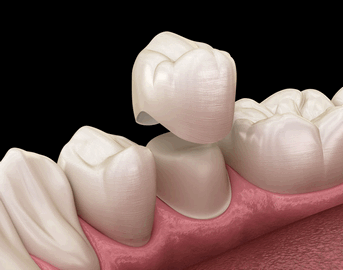A QUICK GLANCE…
The lifespan of cochlear implants can vary depending on several factors. Generally, cochlear implants are designed to last for many years, typically around 10 to 20 years or even longer. However, the longevity of an implant can be influenced by individual factors such as the recipient’s age, overall health, and the extent of device usage. Technological advancements, maintenance, and regular follow-up appointments with an audiologist can also contribute to prolonging the lifespan of a cochlear implant. Ultimately, the durability and effectiveness of cochlear implants are continuously improving, allowing individuals with hearing loss to enjoy the benefits of this remarkable technology for an extended period of time.

At some point, most people will experience some degree of hearing loss. While hearing aids can help amplify sound for many, some people with severe or profound hearing loss may benefit from cochlear implants. These devices bypass the damaged parts of the ear and stimulate the auditory nerve directly, allowing for clearer and more distinct sound perception.
However, like any medical device, cochlear implants have a limited lifespan that will ultimately need to be replaced. As someone who has worked with patients who have cochlear implants, I am often asked, ‘How long do cochlear implants last?’
In this article, we will explore the factors that affect the lifespan of cochlear implants, the average lifespan of a cochlear implant, and how to prolong the life of your device.
Understanding Cochlear Implants and How They Work
Let’s dive into how these tiny devices can bring sound to those who can’t hear and revolutionize the way we perceive the world around us. Cochlear implant technology has come a long way since its inception in the 1960s.
It’s a surgical procedure that involves implanting a small electronic device under the skin behind the ear. The device has electrodes that are placed inside the cochlea, which is the snail-shaped structure in the inner ear responsible for translating sound into nerve impulses that can be sent to the brain.
The cochlear implant technology works by bypassing the damaged parts of the ear and directly stimulating the auditory nerve. The sound signals are picked up by a microphone worn behind the ear and transmitted to the internal device. The electrodes then send electrical signals to the auditory nerve, which the brain interprets as sound.
The implant does not restore normal hearing, but it can help improve the ability to understand speech and other sounds. The surgical procedure for cochlear implants is generally safe and effective, but it’s not without risks.
Complications can occur, such as infection, damage to the facial nerve, or device malfunction. It’s important to discuss the potential benefits and risks with a qualified medical professional before deciding to undergo the procedure.
With proper care and maintenance, a cochlear implant can last up to 20 years or more, depending on the individual and the device.
Factors That Affect the Lifespan of Cochlear Implants
You’ll learn about the different factors that impact how much use you’ll get out of your cochlear implant.
One of the most important factors is the materials used in the implant. The lifespan of the implant depends on the quality of the materials used. Some materials may wear out faster than others, which can lead to a shorter lifespan for the implant. It’s important to choose an implant made from high-quality materials to ensure that it lasts as long as possible.
Another factor that can impact the lifespan of a cochlear implant is environmental factors. Exposure to moisture, heat, and other environmental factors can cause the implant to degrade faster.
It’s important to take care of your implant and protect it from these factors as much as possible. This can include using a protective cover when swimming or showering, avoiding extreme temperatures, and keeping the implant clean and dry.
Finally, the lifespan of a cochlear implant can also depend on how well it is maintained. Regular check-ups with your audiologist can help identify any issues early on and prevent them from becoming more serious.
It’s also important to follow the manufacturer’s instructions for care and maintenance of the implant. By taking good care of your cochlear implant, you can help ensure that it lasts as long as possible and provides you with the best possible hearing experience.
Typical Lifespan of Cochlear Implants
Knowing how long your cochlear implant typically lasts is important for planning and budgeting for future replacements. The lifespan of cochlear implants varies depending on several factors, such as the age of the device, the frequency of replacements, and the maintenance tips followed by the user.
Here’s what you need to know about the typical lifespan of cochlear implants, and how to make the most out of your device:
- First, let’s look at the replacement frequency. While some cochlear implants can last up to 20 years, most manufacturers recommend replacing the device every 7-10 years. This is because the internal components of the implant may wear out over time, affecting its performance. Additionally, newer implants may offer improved sound quality and features that were not available when the older implant was first installed.
- Second, maintenance tips can also affect the lifespan of cochlear implants. It’s important to keep the external parts of the device clean and dry, and to avoid exposing it to extreme temperatures, humidity, or water. Regular check-ups with your audiologist can help detect any issues early on and prevent further damage to the implant. Additionally, following the manufacturer’s guidelines for battery replacement and storage can help prolong the life of your device.
In summary, the typical lifespan of cochlear implants ranges from 7 to 20 years, depending on various factors such as replacement frequency and maintenance tips. It’s important to work closely with your audiologist and follow their recommendations for care and maintenance, to ensure the longest possible lifespan for your device. Ultimately, the goal is to help you hear better and improve your quality of life, so don’t hesitate to ask for help or advice whenever you need it.
Maximizing the Lifespan of Cochlear Implants
Proper maintenance of our cochlear implants is essential in ensuring their longevity and functionality. This includes daily cleaning and periodic checks for any signs of damage or wear.
Regular checkups and upgrades are also important. Technology continues to evolve and improve, and we want to ensure we are always utilizing the latest and greatest options available.
Lastly, using protective accessories can help prevent damage from everyday wear and tear, and extend the lifespan of our cochlear implants. Examples of protective accessories include waterproof covers or hearing aid clips.
Proper Maintenance
Take good care of your cochlear implant by keeping it clean and dry, just like you would your phone or other electronic device. Proper maintenance is crucial to ensuring the longevity of your implant and avoiding costly repairs or replacements.
Here are some tips to help you maintain your cochlear implant:
- Clean your implant regularly with a soft, dry cloth to remove any dirt or debris.
- Avoid using water or other liquids to clean your implant, as moisture can damage the electronic components.
- Use a protective cover or sleeve to protect your implant from damage caused by accidental drops or impacts.
- Make sure the cover fits securely and does not interfere with the functioning of the implant.
The importance of proper maintenance cannot be overstated. Taking care of your cochlear implant not only ensures its longevity, but also helps to prevent potential malfunctions or failures. By following these simple tips, you can maximize the cost effectiveness of your implant and avoid costly repairs or replacements.
Regular Checkups and Upgrades
Regular checkups and upgrades are crucial for maintaining optimal performance of your CI, so make sure to schedule appointments with your audiologist as recommended. Your audiologist will perform a series of tests to evaluate the performance of your CI and make any necessary adjustments or upgrades to ensure that you are receiving the best possible hearing experience. Additionally, your audiologist can provide you with information on the latest advancements in CI technology, which can significantly improve your hearing abilities.
To help you better understand the importance of regular checkups and the benefits of upgrading technology, we have created a table below. This table highlights some of the key factors that can affect the lifespan and performance of your CI, as well as the benefits of keeping up with regular checkups and upgrading technology. By staying informed and proactive about your CI, you can ensure that you are receiving the best possible hearing experience for years to come.
| Factors | Effects on CI Performance |
|---|---|
| Battery Life | Reduced performance |
| Moisture Exposure | Damage to internal components |
| Physical Damage | Reduced performance or failure |
| Upgrading Technology | Improved hearing experience |
Regular checkups and upgrades are essential for ensuring that your CI continues to function at its best. By keeping up with regular appointments and staying informed about the latest advancements in CI technology, you can enjoy the benefits of better hearing for many years to come. So, make sure to schedule your next appointment with your audiologist today!
Use of Protective Accessories
You can enhance the longevity and performance of your CI by utilizing protective accessories to shield it from moisture, physical damage, and other environmental factors.
Protective gear such as waterproof covers, sweatbands, and shock-resistant cases can help prevent the internal components of your CI from getting damaged. These accessories are especially important for individuals who engage in sports or activities that involve water or exposure to extreme weather conditions.
Durability testing has shown that CI accessories can significantly increase the lifespan of the device. For example, waterproof covers can protect your implant from water damage, which is one of the most common causes of CI failure.
Similarly, sweatbands can help prevent moisture from entering the processor, while shock-resistant cases can reduce the risk of damage from accidental drops or impacts. By investing in protective accessories, you can extend the lifespan of your CI and ensure that it continues to perform optimally for years to come.
Considering Replacement Options
When it comes to cochlear implants, it’s important to consider when to replace them. Typically, cochlear implants can last for many years, but they may need to be replaced if they stop working properly.
There are different types of replacement options available, including upgrading to newer technology or simply replacing the external processor.
When to Consider Replacement
If you notice that your hearing has significantly decreased and you’re having difficulty understanding speech, it may be time to think about getting a replacement for your cochlear implant.
There are various reasons why someone may need a replacement, including damage to the device, changes in the individual’s hearing needs, or improved technology. It’s important to consult with your audiologist to determine if a replacement is necessary and what options are available.
When considering a replacement, one major factor to consider is the cost implications. Cochlear implant replacements can be costly, with some estimates ranging from $10,000 to $50,000 or more. Insurance coverage and financial assistance programs may be available, so it’s important to research your options and speak with your audiologist and insurance provider.
Ultimately, the decision to get a replacement should be based on the individual’s unique needs and circumstances, as well as the advice of medical professionals.
Types of Replacement Options
There are several types of replacement options available for those who may need to replace their cochlear implant. The type of replacement option typically depends on the patient’s specific needs and the reason for the replacement.
One option is to replace the external device, which includes the microphone and processor. This is often done if the external device is damaged or if there is an upgrade available that offers additional benefits, such as improved sound quality or longer battery life.
Another option is to replace the internal device, which includes the electrode array and receiver-stimulator. This may be necessary if the implant durability has been compromised due to damage or if there are issues with the device’s functionality. In some cases, patients may opt for an upgrade to the internal device if there are newer models available that offer improved performance or additional features.
It is important to consult with a healthcare professional to determine the best replacement option based on individual needs and circumstances. To emphasize the importance of seeking professional advice, here are three factors that should be considered when choosing a replacement option:
- The reason for the replacement: Different replacement options are available depending on the reason for the replacement, such as damage or upgrade benefits.
- Individual needs: Each patient’s needs are unique, and the replacement option should be chosen based on their specific needs and circumstances.
- Professional guidance: It’s important to consult with a healthcare professional to determine the best replacement option and ensure the procedure is performed safely and effectively.
Insurance and Financial Considerations
The cost of replacing a cochlear implant and related expenses can be significant, so it’s crucial to consider insurance coverage and financing options.
Most insurance plans cover at least part of the cost of cochlear implant replacement, but it’s essential to check with your insurance provider to determine the extent of your coverage. Some insurance policies may require pre-authorization, and others may have specific requirements for the replacement procedure.
Financing options may also be available to help cover the cost of a cochlear implant replacement. Some manufacturers offer financing plans with low or no interest rates, allowing patients to spread the cost of the replacement over time.
Additionally, some nonprofit organizations offer financial assistance to individuals who need assistance covering the cost of cochlear implant surgery or replacement. It’s essential to research all available financing options to determine the best option for your needs and budget.
With proper insurance coverage and financing options, cochlear implant recipients can ensure that they have access to the latest technology and can enjoy the benefits of improved hearing for years to come.
Conclusion
In conclusion, cochlear implants are life-changing devices that allow people with hearing loss to connect with the world around them.
While the lifespan of a cochlear implant varies depending on several factors, the typical lifespan is around 10-15 years. However, with proper care and regular maintenance, the lifespan of a cochlear implant can be extended.
It’s important for those with cochlear implants to stay informed about their device and work closely with their audiologist to ensure it’s functioning properly.
When the time comes for a replacement, there are various options to consider and advancements in technology continue to offer new and improved options.
With the continued advancement of cochlear implant technology, the future looks bright for those with hearing loss.





